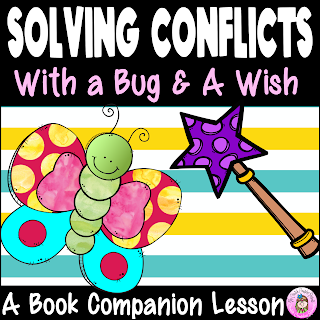Shake that Feeling Lesson!
Hey there! In today's fast-paced world, it's super important for kids to develop emotional smarts and life skills that'll help them succeed socially and academically. So I would like to share this awesome lesson that focuses on boosting kids’ self-confidence, communication skills, and problem-solving abilities. Let’s shake things up and see how this lesson can empower kids to handle their emotions and interactions like champs!.
Frosty Feelings: Unlocking the Power of Emotional Awareness
You know what's cool? When kids learn more words to describe their feelings, it's like they're unlocking a superpower. They start understanding their emotions better and become more aware of what's going on inside them. It's like they're getting an upgrade!
In this lesson, kids get to explore all kinds of feelings. They learn about the good ones that make them feel awesome, and the not-so-good ones that can bring them down. By giving names to these emotions, they become emotion experts!
And guess what? Having a bunch of words to describe their feelings helps them express themselves better. Instead of just saying, "I'm sad," they can say, "I'm feeling bummed out and a bit down." It's like painting a clearer picture of how they feel.
And you know what's cool? When they understand their emotions, they can deal with them like bosses. They know when they need a break or when they can ask for help. Plus, they can understand how others feel too, which makes them super empathetic and good friends.
So, by learning more words and becoming more self-aware, kids can handle their feelings, understand others, and rock at life. It's like having a secret power that helps them in school, with friends, and everywhere else. Emotions are pretty awesome, don't you think?
One activity that supports this is the interactive activity where students review and discuss different feelings, clicking on each feeling to learn more about them. Sharing and hearing from peers is like giving them a strong emotional foundation to work with.
Snowfall Expressions: Communicating Feelings with Flurry
Now, expressing feelings the right way is a big deal in this lesson. Kids are encouraged to share their emotions and thoughts, which helps them become great communicators. They learn to use "I" Messages to express themselves respectfully and assertively. That means they can say what's on their minds without being rude, and it also promotes empathy and understanding among their peers.
"I" messages are like the secret sauce to expressing our feelings and solving problems like a pro. They're all about communicating in a respectful way that gets your point across and makes others understand where you're coming from. So, let's break it down and see why "I" messages are so awesome for dealing with emotions and finding solutions.
Okay, so here’s how it works: an I message has three parts. First, you say, "I feel...". This is where you share your emotions and let people know how something is making you feel. It's like opening up and giving them a glimpse into your world.
Next up, you say, "when...". This is where you explain the situation or behavior that's causing those feelings. You have to be specific and point out what's happening so everyone's on the same page. It's like saying, "Hey, this is what's going on and how it's affecting me."
Last but not least, you say, "please...". This is where you express your needs or suggest a way to fix the problem. You're not just venting or complaining, you're actually taking charge and looking for a solution. It's like saying, "Hey, let's work this out and find a way to make things better."
When you use I messages, it's like opening up a door for real talk and understanding. Instead of pointing fingers or playing the blame game, you create a safe space for communication. It's all about being heard and having a respectful conversation.
In the lesson plan, there are activities like the "I Message Examples” that show you how to put those I messages into action. Students get practical examples of how to construct and use them in real-life situations. It's like a crash course in speaking your mind without causing drama.
By mastering the art of I messages, students become communication ninjas. They learn to tackle conflicts, sort out misunderstandings, and find solutions that work for everyone involved. It's all about listening, understanding, and finding common ground.
Snowballing Self-Confidence for Success
I messages don’t come easy! It’s easier just to show your frustration and blame others. Practicing is the key to making it a natural go to communication tool to solve problems, build bridges, and create positive relationships with others. So in this lesson, we continue to build self-confidence by playing “Build a Snowman" where students identify and construct "I Messages" using the three parts: I feel..., when..., please... Practicing these types of activities validates students’ feelings and encourages self-expression. Kids start feeling more sure of themselves when it comes to talking and dealing with tough situations.
Snowy Strategies: Uncovering Solutions
Oh, and let's not forget about problem-solving skills! This lesson is all about cultivating those. Kids get to participate in interactive scenarios such as the "Snow Globe Scenarios" activity, where students read scenarios and choose the appropriate feeling – shaking things up and reinforcing problem-solving and emotional understanding!
Imagine how awesome it would be for kids to feel empowered and sure of themselves when facing challenges. They become great at finding solutions and working things out with others. Plus, they become awesome communicators who know how to get their point across without any confusion. These skills make a huge difference in their lives, helping them succeed in school, make friends, and handle all sorts of situations. Learning how to size up situations, spot the real issues, and communicate their needs is like giving kids a secret power that they can use forever!
And here's a bonus: this lesson also helps kids become social butterflies with a ton of empathy. By exploring different feelings and situations, they better understand how others experience emotions. They learn to respect and appreciate their friends' feelings and perspectives, which creates a culture of kindness and understanding. Plus, all the interactive activities encourage them to work together, be part of a team, and create positive and supportive relationships. One final cooperative activity I have for them is an "I" Message Memory card game.
Color by Code Frosty’s Feelings!
































